12 July 2018
40 Ways to Reduce Your Carbon Footprint
Here are 40 easy changes you can make in order to reduce the impact your life has on the greater environment!
1. Reduce
Avoid unnecessary consumption. Do you boil enough water for 6 cups when you only want one?
2. Reuse
Buy items that are reusable and reuse them. Before you throw it away ask yourself, can I reuse this wrapping paper?
3. Recycle
Recycling reduces landfill and saves resources.

Image: Avalon House
4. Power shower!
Shower in under 4 minutes. If you are showering for 10 minutes, you are wasting enough water to fill a pool over a course of a year! You can save more than 16,000 litres of water, $90 on the water bill and $150 on gas.
5. Stem the flow.
Use innovative tap and shower fittings that can cut the flow of water by more than half. This will save you money on your bills and reduce your carbon footprint!
6. Don’t flush it all away!
A single flush toilet can use up to 12 litres in one flush! Reduce your flushes.
7. Wash your dishes.
Be mindful of and conservative with the amount of water and energy you use while washing your dishes. Use an energy and water efficient dishwasher; however, be strategic about the cycle you select for each particular load and avoid running a half-empty dishwasher. Alternatively, try washing all of your dishes using one sink full of water. For more tips and information, click here!
8. Go solar!
Use the suns rays to heat your water. It’s free and it will provide most of your households hot water needs.
9. Go Photovoltaic!
Though it is initially expensive to set up, a photovoltaic system will generate enough power for 30 years and pay itself off after about 8 years.
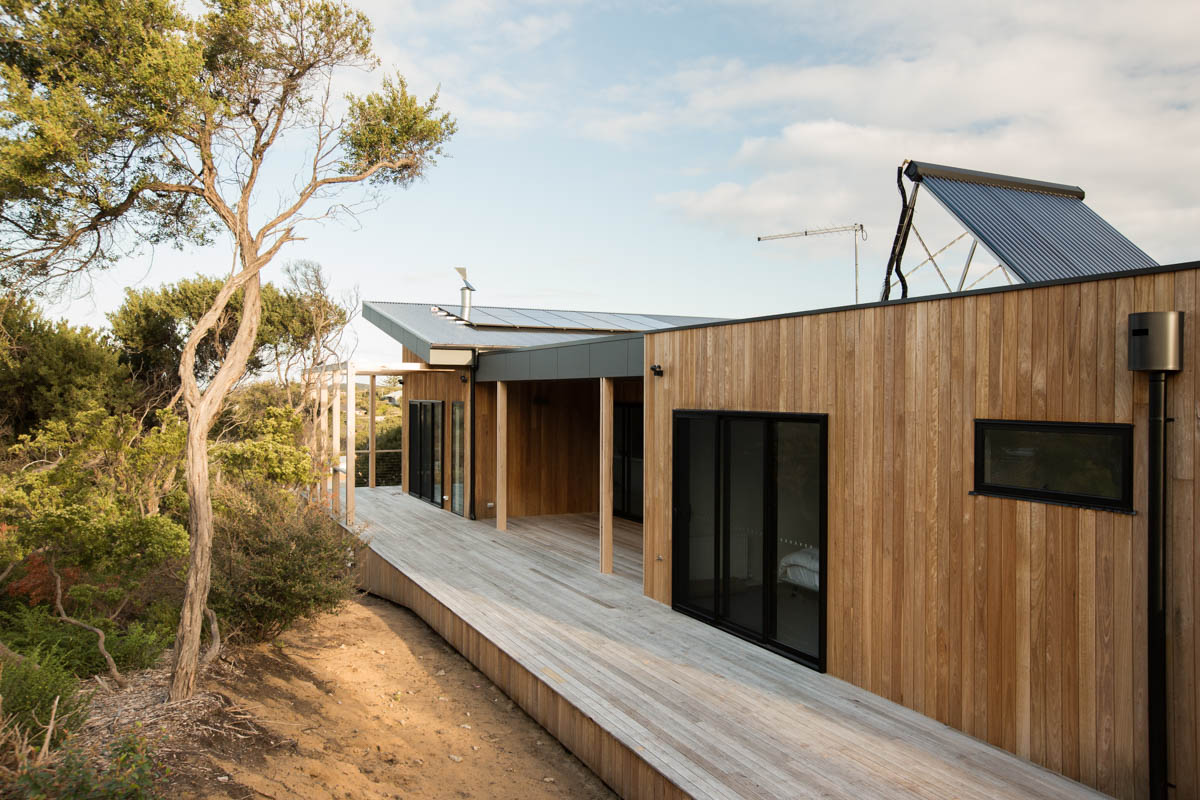
Image: Sorrento House II
10. Get cosy!
Minimize your heater use and use insulation material made from jute, glass wool or recycled paper to keep you warm. Home heating and cooling are responsible for 11% of household greenhouse gas emissions.
11. Seal the cracks!
Use inexpensive seals to plug cracks and gaps, fitting dampeners to fireplaces and blocking unnecessary vents. This will reduce your heating and cooling usage.
12. Join the fan club!
Use fans instead of air conditioning.
13. Make the most of the day!
Use natural light, open your curtains, have a skylight inserted in your roof, this will save you electricity usage.
14. Have a light touch!
Often the lighting is unnecessary. Turn them off if you are not in the room using them. This will reduce your electricity bill. Dimming the lamps also helps. And it is a myth that turning lights on and off uses more electricity than leaving them on.
15. Use bright ideas!
Don’t use incandescent light bulbs, instead use LEDs.
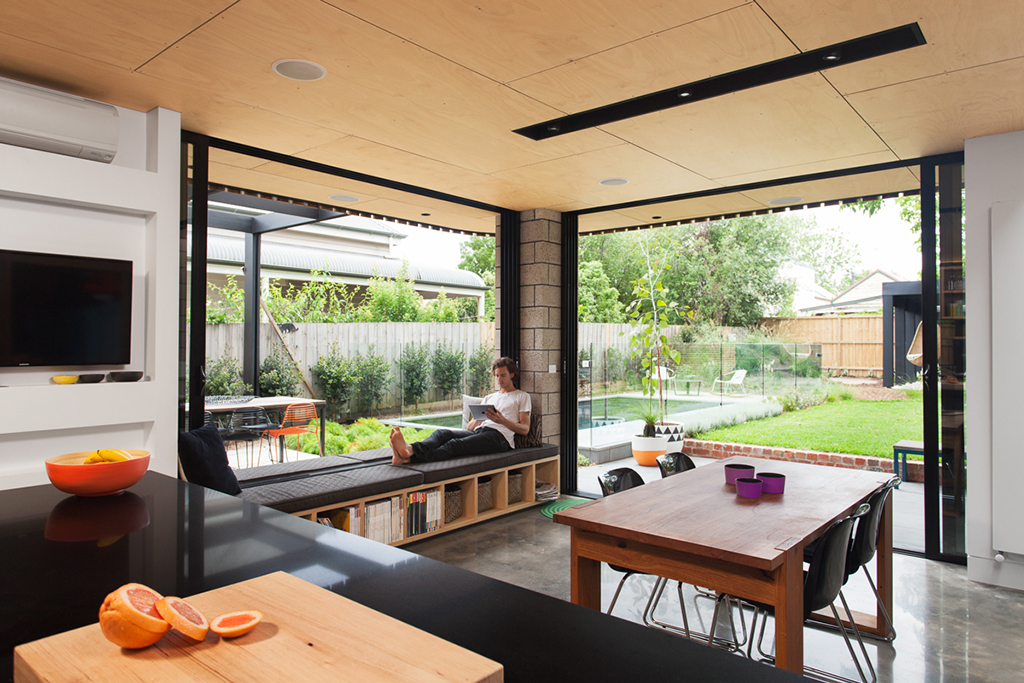
Image: Balaclava House
16. Blow off the heater.
Natural gas and reverse-cycle air conditioners are better alternatives than radiators and electric bar heaters and fan heaters.
17. Warm yourself and not the environment.
One of the earliest – and still most efficient – forms of insulation invented was clothing. Snuggle in a jumper and thick socks or try jumping up and down for a minute to warm yourself. Temperature variations are a natural part of life and a fit and healthy body should be comfortable enough without excessive artificial heating or cooling.
18. Step up to the line!
Choose the natural solution when drying out your clothes, hang them on the clothesline. If you don’t have a clothesline, choose a solar clothes dryer.
19. Cold wash!
Select cold water cycle on your washing machine to wash your clothes. Using hot water generates five times more in greenhouse gas.
20. Cool it!
Maximize your fridge’s efficiency by making sure the seals work and position it in a cool spot. Freezers should be set 15 to 18 degrees below 0 and fresh food compartments set to 4 degrees. Every one degree lower increases energy consumption.
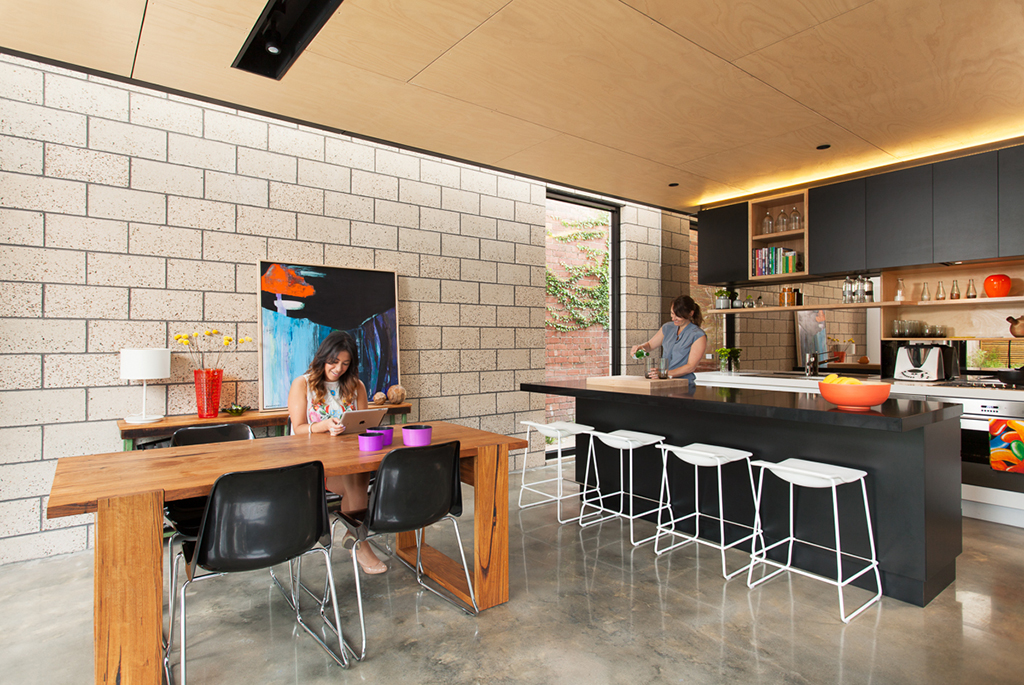
Image: Balaclava House
21. Don’t cook up a storm!
Cook efficiently, reuse hot water, put lids on pots, have dishes simmer rather than boil and don’t worry about preheating the oven.
22. Get drastic on plastic!
Plastic is difficult to dispose of and ruins our environment. Choose furnishings and household items that will last and can be recycled.
23. Soft furnishings.
Look for natural furnishings that have been or can be recycled, tables made from reclaimed timber, organic cotton curtains, beeswax candles, bamboo, hemp bedding or jute flooring.
24. Detox your home!
Household chemicals are toxic to the environment. Chemicals like paints, aerosol cans, furniture polish, glues, oils, nail polish remover and battery acid.
25. In the can.
Use organic and toxin-free brands of paints and natural wood oils for timber floors.
26. Go with the grain.
Wood is a perfect renewable and sustainable resource. Just make sure your wood is coming from a forest managed according to internationally agreed social and environmental standards.
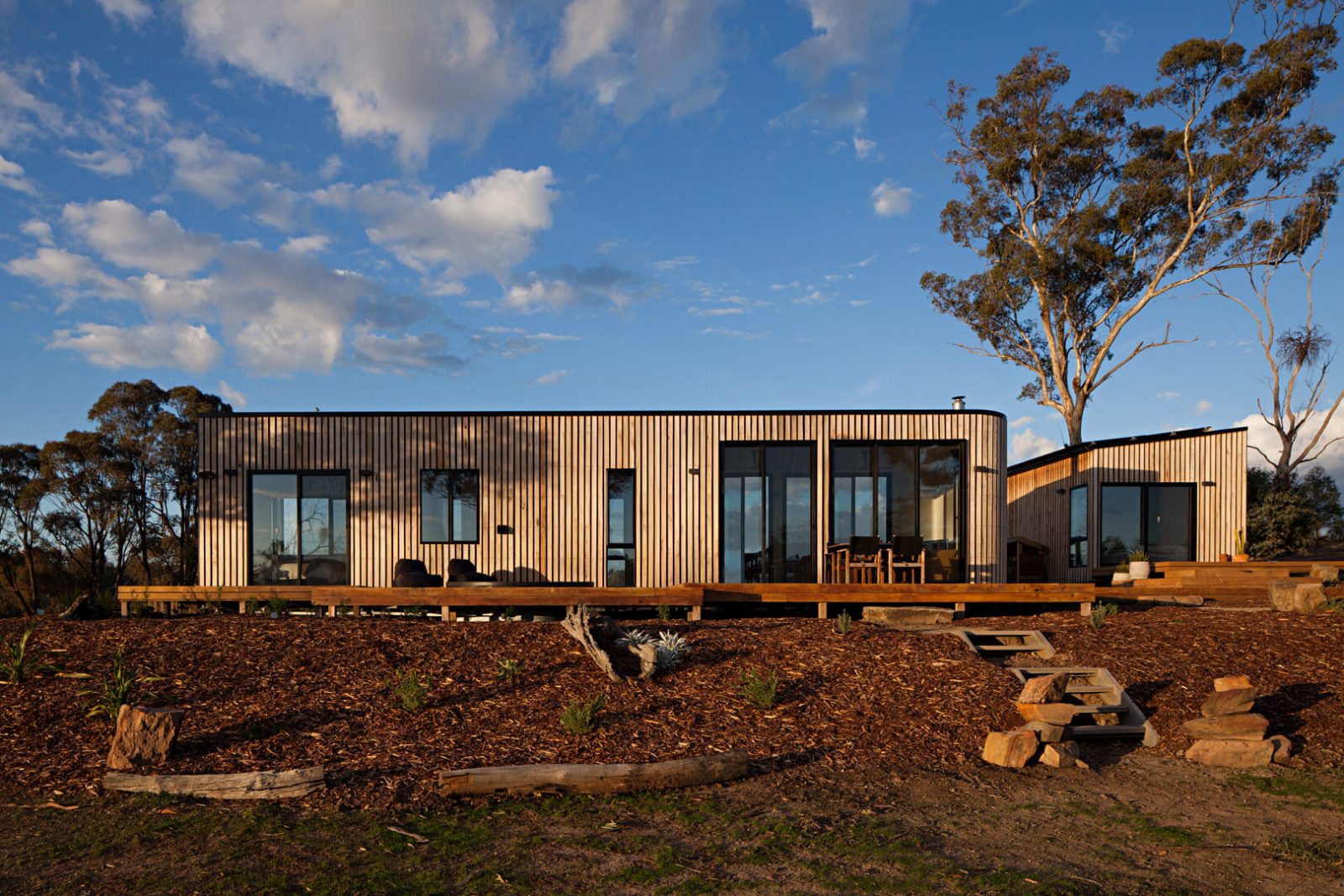
Image: Clydesdale House
27. Build, don’t destroy.
Use recycled bricks, windows, roof tiles, door floorings, windows, doors, fireplaces, and fittings in your home!
28. Curtain call.
Use glass technology and heavy lined curtains to keep your house cool to prevent you from using air conditioning.
29. Get glazed!
Get double glazed windows, this will keep the heat in, in winter.
30. Turn it off!
Turn off your tv, DVD player, electronic appliances at the power point. Having it on actually uses electricity, costs you money and increases your carbon footprint. So turn them off when you’re not using them, and when you go to sleep at night.
31. Switch to renewables!
32. Go native!
Save water and go for native plants. Foreign plants will guzzle water. Native plants will not only attract birds and butterflies but save the time and expense of daily watering.
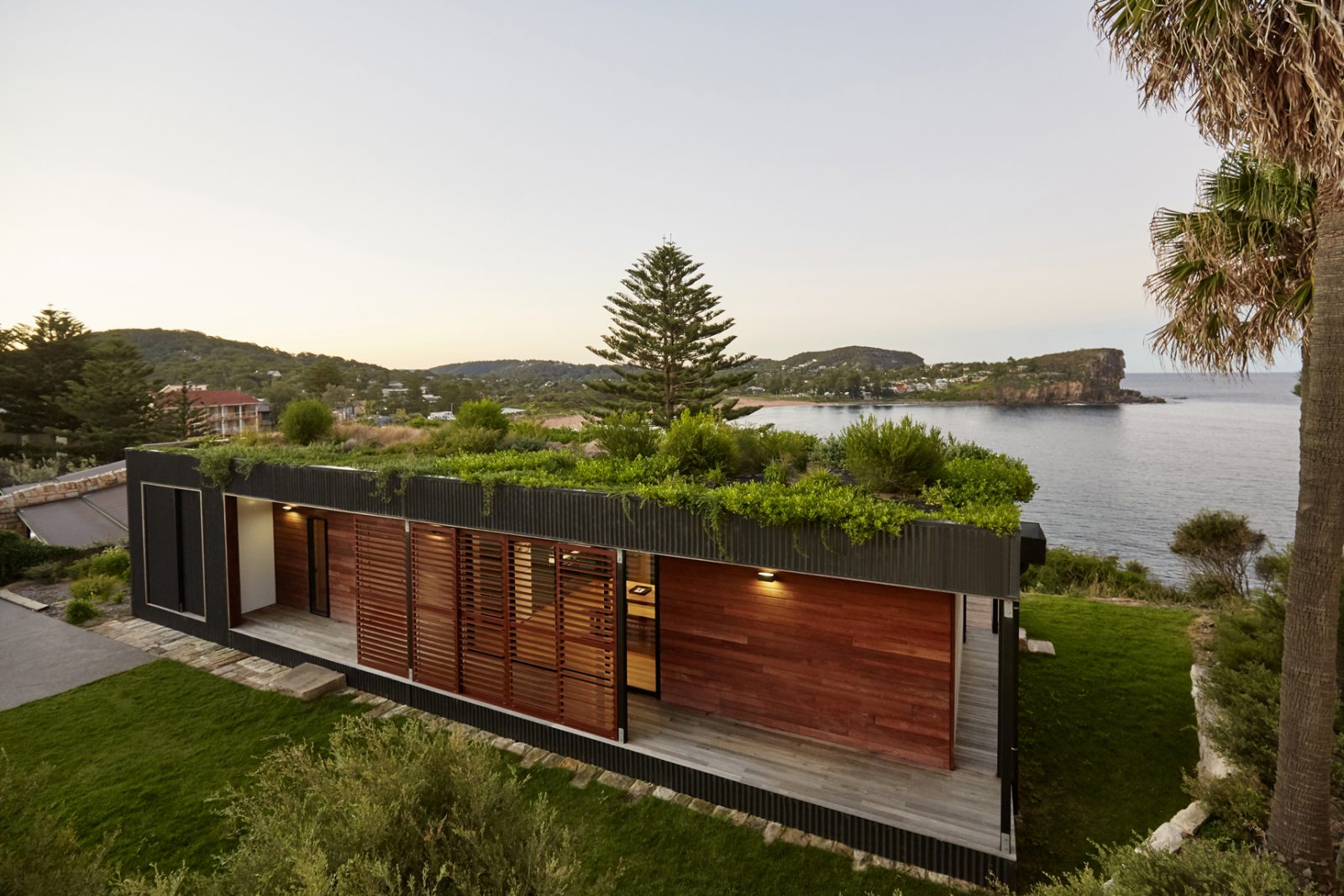
Image: Avalon House
33. Layer!
In natural bushland, there are five main layers of vegetation in which different animals live. Try to replicate this in your garden with a combination of tall trees, smaller trees and tall shrubs, groundcover grasses and a little layer of leaf matter, fallen branches, logs and rocks. This is greater bio0diversity, lowers your gardens water consumption and lowers your water bills.
34. Cover up.
Cover up your lawn and put mulch around your plants and lawn to cut the amount of water lost through evaporation by 70%.
35. Go green!
Plant trees around your home and use plants inside your home. Plants not only lower greenhouse emissions and provide habitats for wildlife, they can also lower home energy costs by keeping your place cool.
36. Go greywater system!
Use recycled water for the toilets and garden from basins, showers, washing machines and the kitchen sink using greywater recycling systems. Only about half of the water used by the average household needs to be crystal clear drinking water.
37. Think tank!
Get a water tank at your place that can catch the water that falls on your roof and use this water for the garden, to fill the pool, for flushing toilets, doing the laundry, showering or even drinking. This will lower your demand for water supply.
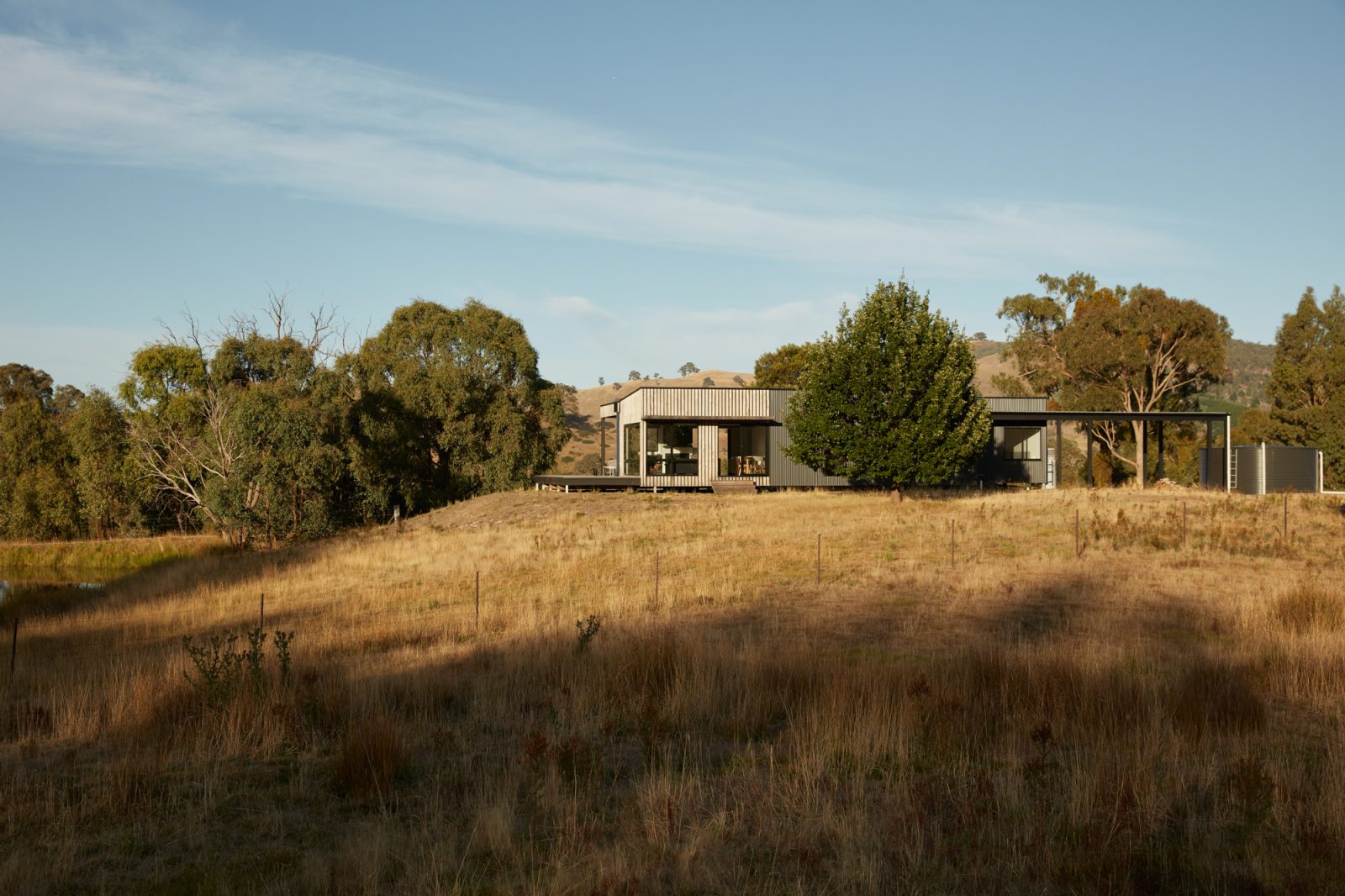
Image: Bonnie Doon House
38. Bring the birds!
Make for easier gardening, lower insect population and easier gardening by bringing birds to your garden. They also provide colour, movement, sound and useful fertilization and pest control services.
39. Make a clean sweep.
Eliminate all petrol-powered mowers, blowers, snippers and trimmers which would cut as much air pollution as taking a quarter of the nation’s vehicles off the road!
40. Grow your own fruit and veggies!
This is fun, will lower your grocery bills and carbon emissions and makes for better eating. The further your food travels to reach your plate, the greater the energy and associated greenhouse emissions.
We love sharing all the new and exciting things happening at Archiblox, so make sure you’re following us on
Instagram,
Facebook
and
Twitter,
or signed up to our
monthly newsletter, to ensure you don’t miss a thing.
Original words by Kyndra Holley have been abridged and amended.
Originally published in Healthy Body and Mind on March 7, 2014.